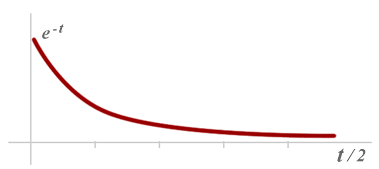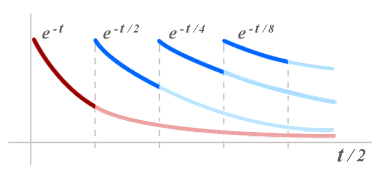|
We forget most of what we learn after a short period of time. In 1885,
the German psychologist Hermann Ebbinghaus showed that (under the circumstances of his experiment) we forget 75% of what we learn within
48 hours (see
Wozniak 1999). This result was corroborated later (Pimsleur 1967; Bahrick 1975, 1984; Bloom et al. 1981; Rubin,
Wenzel 1996). The following graph shows an example of the so-called "forgetting
curve" (recalling ability vs. time):

In many cases, memory decay assimilates to a log-like function, a power
function, or a negative exponential function (Rubin, Wenzel 1996; Staddon, Higa 1999; Ritter, Schooler 2001; Raaijmakers,
Shiffrin 2002). Of course, the shape of the so-called "forgetting curve" is determined by the nature
of the subject matter, the occurrence of interferences with similar material, and other factors.
The good knews is that spaced
repetitions make the forgetting curve smoother and smoother (Salisbury
1990):

As a result, the intervals between consecutive reviews may be increased
gradually (Landauer and Bjork 1978; Cull et al. 1996). According
to certain researchers, the intervals should be as long as possible so as to minimize time and effort investment
(Dempster 1987, 1988, 1996).
|

